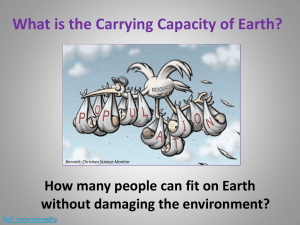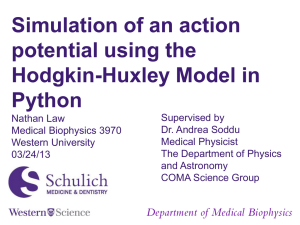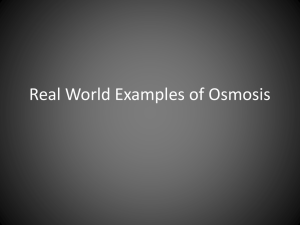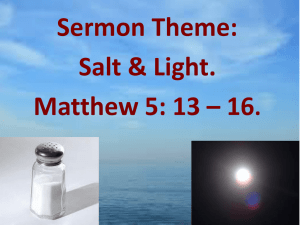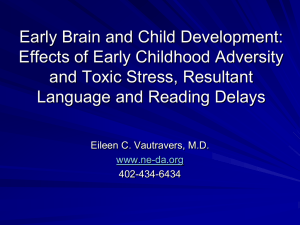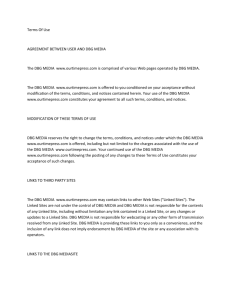a biophysical phenomenon
advertisement
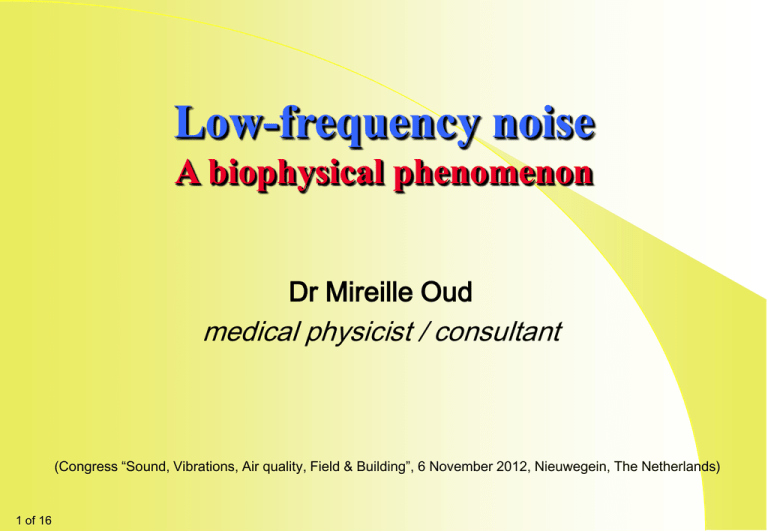
Low-frequency noise A biophysical phenomenon Dr Mireille Oud medical physicist / consultant (Congress “Sound, Vibrations, Air quality, Field & Building”, 6 November 2012, Nieuwegein, The Netherlands) 1 of 16 Contents 2 of 16 Sources low-frequency sound Biophysics perceptibility (neurobiologist A.N. Salt, Washington University) Health effects Conclusions Advices References Sources low-frequency sound (<<150 Hz) Via air: up to 1 km Wind turbines Gas transport District heating Industry Difference tones … (Ref.: Kohlhase 2011) Via ground: up to 100 km cumulation sources 3 of 16 Sources low-frequency sound Wind turbines (Ref.: Kennisportal Wind energy) 4 of 16 Gas grid (Source.: www.gasunie.nl) Biophysics perceptibility Organ of balance ______ ___ Cochlea (Ref.: Chittka & Brockmann 2005) 5 of 16 (Ref.: Prasad) Biophysics perceptibility __________ Cochlea (Ref.: Encyclopaedia Brit. 1997) (Ref.: Madhero88) Outer hair cells: pre-amplifier Inner hair cells: to brain 6 of 16 Biophysics perceptibility (Ref.: Salt 2011) Can become audible 7 of 16 Audible for everyone (Ref.: Pedersen 2008) Biophysics perceptibility Occlusion helicotrema 20dB increase sensitivity for low frequencies 8 of 16 (Ref.: OpenLearn LabSpace) Endolymfatic hydrops (swelling middle tube) dizziness (Ref.: Salt & Lichtenhan 2012) Biophysics perceptibility response cochlea test animal 5 Hz 500 Hz Audible cochlea-activity (500 Hz) interacts with inaudible cochlea-activity (5 Hz) low tone audible through amplitude modulation audible 5 Hz (Ref.: Salt & Lichtenhan 2011) 9 of 16 Biophysics perceptibility a. mono 220 Hz b. mono 222 Hz c. mono 220 + 222 Hz d. stereo: left 220, right 222 (Click here, in presenting mode of powerpoint. Use head phone.) 10 of 16 (Source: M. Oud 2012) Low frequencies audible for everyone: beat, difference tone Superposition of nearly equal, audible, tones (a and b) this amplitude modulation can be acoustic (c) and neural (d) (Useful application: tuning musical instrument) Biophysics perceptibility G-weighting: ISO 7196:1995 weighted wind-turbine spectra (Ref.: Van den Berg 2006) (Ref.: Cedric 2004) 11 of 16 dBC and dBG more realistic Health effects 12 of 16 Still more people perceive LFN (hearing / feeling) Health effects LFN: • Dizziness • Continuous, pulsing pressure on head • Disturbed sleep • Stress • Raised blood pressure • Heart rhythm disorders •… Health effects Why is low-frequency sound experienced as nuisance? 13 of 16 Directionless, lacks spaciality seems “within the head” Character (monotonous or pulsing) & duration Lack of autonomy (uncontrollable): ear plugs no effect: entrance is via bone conduction Affects physiology (structure cochlea) Conclusions 14 of 16 Perception low-frequency sound been demonstrated objectively (audiograms) Perception low-frequency sound biophysically explicable Significant part NL-population experiences damage Low-frequency sound requires different way of assessment: minimally dBC instead of dBA , preference dBG Advices 15 of 16 Systematic investigation health issues More scientific research (medicine & physics) Defining measurement and assessment methodology Formulate norms for low-frequency sound International approach Makes sources low-frequency restricted Adjustment home environment? Referenties 16 of 16 Dutch low-frequency noise vigilance group: www.laagfrequentgeluid.nl Dr Mireille Oud: http://nl.linkedin.com/in/MireilleOud Prof. A.N. Salt: http://tiny.cc/AlecSalt ISO norm dBG: http://tiny.cc/ISO1 (ISO.org) and http://tiny.cc/ISO2 (DiracDelta science eng. enclyclopedia) Berg, G.P. van den (2006), “The sound of high winds: the effect of atmospheric stability on wind turbine sound and microphone noise” Ph.D. thesis, Biomed. eng. dept. Rijksuniversiteit Groningen Cedric R. (2004), “Ecoaccess guideline for the assessment of low frequency noise“, Proc. of Acoustics 2004, 619– 624, Gold Coast, Australia Chittka L, Brockmann A (2005) Perception Space – The Final Frontier. PLoS Biol 3(4): e137. doi:10.1371/journal.pbio.0030137 Encyclopaedia Britannica (1997) “Cochlea” www.britannica.com Kennisportal Wind energy on land (2011), “Bestaande windparken”, Min. Infrastructuur and Environment e.a. www.w-i-n-d.nl/ Kohlhase S (2011), “Explaining buried pipeline induced LFN hum and gas turbine flutter …” Brookfield Ct, USA Madhero88: http://commons.wikimedia.org/wiki/User:Madhero88 OpenLearn Labspace, “Hearing – section 3.3 The role of the basilar membrane in sound reception” http://labspace.open.ac.uk/mod/resource/view.php?id=415643 Pedersen C.S. (2008), “Human hearing at low frequencies with focus on noise complaints”, Ph.D. thesis, Acoustics dept. of elec. systems, Aalborg University, Denmark Prasad, “Mechanical cochlea”, senior design project, Stevens Inst. Techn. http://mechanicalcochlea.wordpress.com/home/the-cochlea/ Salt A.N. (2011), “Processes underlying homeostasis of cochlear fluids”, Washington univ. http://oto2.wustl.edu/cochlea/WTPicton_salt_final.pdf Salt, A.N. & Lichtenhan J.T. (2011), “ Responses of the inner ear to infrasound”, 4th Int. meeting on wind turbine noise, Rome Salt, A.N. & Lichtenhan J.T. (2012), “Perception-based protection from low-frequency sounds may not be enough”, inter.noise 2012 New York
